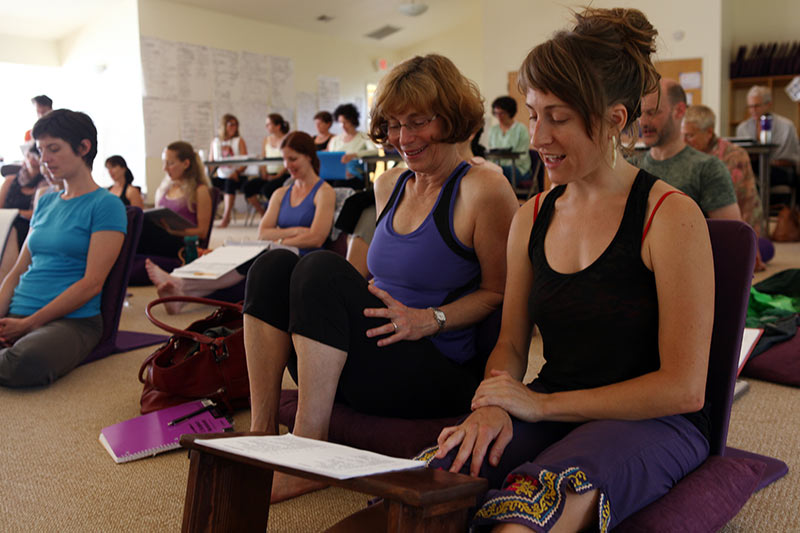What is Viniyoga?
Appropriate application of the tools of yoga
Viniyoga is a comprehensive and authentic transmission of the teachings of yoga including āsana, prāṇāyāma, bandha, sound, chanting, meditation, personal ritual and study of texts. Viniyoga (prefixes vi and ni plus yoga) is an ancient Sanskrit term that implies differentiation, adaptation, and appropriate application.
tasya bhūmiṣu viniyogaḥ
Patañjali Yoga Sūtra III.6
The American Viniyoga Institute uses the term Viniyoga to refer to an approach to yoga that adapts the various means and methods of practice to the unique condition, needs and interests of each individual – giving each practitioner the tools to individualize and actualize the process of self-discovery and personal transformation.

The practices of yoga provide the means to bring out the best in each practitioner. This requires an understanding of a person’s present condition, personal potential, appropriate goals and the means available. Just as every person is different, these aspects will vary with each individual.
Gary Kraftsow, MA, E-RYT 500, C-IAYT, evolved this approach to yoga from the teachings transmitted by T. Kriṣṇamācārya and T.K.V. Deśikācar of Madras, India.
The Lineage of Viniyoga
What distinguishes Viniyoga from other forms of yoga?
There are four points that characterize the main difference between the Viniyoga approach and most other forms of āsana practice:
Function Over Form
The emphasis on function rather than form in āsana practice, and the science of adapting the forms of the postures to achieve different results.
Breath and Adaptation
The emphasis on breath as the medium for movement in āsana, and the science of adapting the pattern of breathing in āsana to produce different effects.
Repetition and Stay
The use of repetition into and out of the postures, as well as holding the postures.
Art and Science of Sequencing
The refined art and science of sequencing which allows teachers to create practices of different orientation, length, and intensity to suit the intention and context of each practice and/or practitioner


